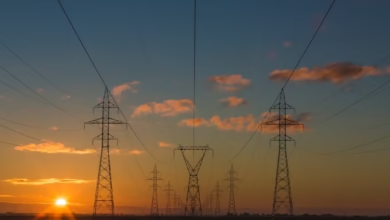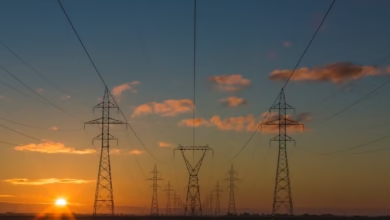How Global Energy Markets Operate: Pricing, Contracts, and the Future of Renewable and Distributed Energy

Understanding how energy is traded in global markets is vital for grasping the complex interplay between economic growth, climate change, and technological innovation. As nations strive to secure reliable energy while reducing emissions, the dynamics of energy pricing, supply contracts, and commodity exchanges shape not only the availability of traditional fossil fuels, but also the adoption of renewable energy, nuclear energy, and advanced solutions like smart grids and hydrogen energy. With growing investments in green energy, offshore energy, and energy storage, the global energy landscape is rapidly evolving. This article explores key mechanisms driving these market shifts—ranging from pricing strategies for solar power, wind energy, hydropower, and bioenergy to the structure of supply agreements and the crucial role of commodity exchanges. It also delves into how energy transportation, international trade, policy frameworks, and energy R&D are influencing global energy trends, energy efficiency practices, and the transition toward a more resilient, low-carbon future. Whether tracking energy imports and exports, or navigating emerging distributed energy systems and carbon capture technologies, a clear understanding of market forces is crucial for businesses, policymakers, and consumers shaping the next era of energy economics and energy security.
- 1. Navigating Global Energy Markets: Pricing Mechanisms and Their Impact on Renewable Energy, Fossil Fuels, and Nuclear Energy
- 2. Supply Contracts, Energy Exchanges, and the Shift Toward Green Energy and Distributed Energy Systems
- 3. Energy Transportation, Investment Trends, and Policy Impacts on Energy Security, Efficiency, and the Energy Transition
1. Navigating Global Energy Markets: Pricing Mechanisms and Their Impact on Renewable Energy, Fossil Fuels, and Nuclear Energy
Navigating global energy markets requires a firm understanding of how pricing mechanisms influence everything from the production of fossil fuels to the adoption of renewable energy and the role of nuclear energy. Pricing sets the stage for strategic decisions across the sector, shaping global energy trends, investment flows, and the pace of the energy transition.
Energy markets typically operate through a mix of long-term supply contracts and real-time commodity exchanges. The price of crude oil, for instance, is driven by benchmarks like Brent and WTI, while natural gas markets often rely on regional indices. These pricing structures directly impact the competitiveness of various energy sources. For example, when fossil fuel prices spike due to geopolitical tensions or disruptions in energy transportation, renewable energy sources such as wind energy, solar power, and hydropower become more attractive to both investors and policymakers seeking greater energy security.
Renewable energy pricing is increasingly set through auctions and power purchase agreements (PPAs), which provide cost predictability and attract energy investment. As technology costs decline and energy efficiency improves, the levelized cost of green energy—comprising solar, wind, and bioenergy—continues to fall. This trend accelerates the integration of distributed energy systems and the deployment of electric vehicles and smart grids, supporting the broader objectives of energy R&D and climate change mitigation.
Nuclear energy pricing, while less volatile than that of fossil fuels, is influenced by initial capital costs, regulatory frameworks, and government energy policies. Its stability appeals to markets focused on baseload supply and energy security, particularly as part of a balanced energy mix that includes emerging technologies like thermal energy storage, hydrogen energy, and carbon capture systems.
Ultimately, the interplay between energy economics and market mechanisms also drives innovation. Strategic incentives and transparent pricing not only promote cleaner offshore energy projects but also encourage advances in energy storage and the adoption of low-carbon solutions. As energy exports and imports shift according to these mechanisms, nations must continually adapt their policies to enhance energy security and support the ongoing energy transition on a global scale.
References
International Energy Agency. (2023). World Energy Outlook 2023. https://www.iea.org/reports/world-energy-outlook-2023
BP. (2023). Statistical Review of World Energy 2023. https://www.bp.com/en/global/corporate/energy-economics/statistical-review-of-world-energy.html
BloombergNEF. (2024). Clean Energy Investment Trends, 2024. https://about.bnef.com/clean-energy-investment/
2. Supply Contracts, Energy Exchanges, and the Shift Toward Green Energy and Distributed Energy Systems
Supply contracts and commodity exchanges are pivotal in shaping the structure of global energy markets. Traditionally, long-term supply contracts have dominated transactions for fossil fuels like oil, natural gas, and coal, providing price stability for both producers and buyers. These agreements often include clauses that safeguard energy security by ensuring consistent supply, an especially critical consideration for countries heavily dependent on energy imports.
Energy exchanges, in contrast, have introduced more flexibility and transparency. Platforms such as the European Energy Exchange (EEX) and North American Power Exchanges facilitate real-time price discovery and efficient trading for a diverse array of energy products, including not only fossil fuels but increasingly renewable energy sources. This shift has been driven by growing energy investment in wind energy, solar power, hydropower, and bioenergy, all of which demand more dynamic and adaptable trading mechanisms as their shares in the global energy mix rise.
The global energy transition toward green energy and higher energy efficiency is also transforming supply contracts and market operations. New contract structures now address the variability inherent in sources like wind and solar power, integrating elements such as energy storage, smart grids, and demand response to stabilize supply. Offshore energy, nuclear energy, and emerging hydrogen energy markets are also shaping innovative contract designs and exchange products, reflecting evolving energy policy priorities and climate change mitigation strategies.
Furthermore, the rise of distributed energy systems—where electricity is generated and sometimes stored closer to end-users using technologies like rooftop solar power, local wind turbines, and community energy storage—empowers consumers and creates opportunities for peer-to-peer energy trading. This model is supported by energy innovations such as blockchain-based platforms and smarter grid infrastructure, which facilitate decentralized transactions and enhance grid reliability.
These changes collectively advance energy economics by improving price signals, incentivizing lower-carbon solutions like carbon capture, and supporting regional and global energy exports and imports. They reinforce global energy trends favoring renewables, facilitate energy R&D, and help build the resilient, low-carbon energy systems needed to address climate change while safeguarding long-term energy security.
References:
European Energy Exchange. (2024). Trading Markets. https://www.eex.com/en/
International Energy Agency. (2023). World Energy Outlook 2023. https://www.iea.org/reports/world-energy-outlook-2023
World Bank. (2023). The Role of Energy Storage in Modern Power Systems. https://www.worldbank.org/en/topic/energy/publication/the-role-of-energy-storage
IEA. (2022). Energy Storage and Demand-side Management. https://www.iea.org/topics/energy-storage
BloombergNEF. (2023). Global Renewable Investment Trends. https://about.bnef.com/blog/global-renewable-investment-trends-2023/
3. Energy Transportation, Investment Trends, and Policy Impacts on Energy Security, Efficiency, and the Energy Transition
Efficient and reliable energy transportation is central to the stability of energy markets and the global flow of resources. The methods and infrastructures used to move fossil fuels, renewable energy, and nuclear material—such as pipelines, power grids, shipping routes, and LNG terminals—directly impact energy security and the overall resilience of nations to supply disruptions. For example, advancements in smart grids and distributed energy networks have enabled greater integration of renewable energy like solar power, wind energy, and hydropower, reducing reliance on centralized fossil fuel imports and bolstering grid efficiency.
Recent global energy trends highlight a surge in energy investment, particularly toward clean and green energy innovations such as hydrogen energy, energy storage technologies, and carbon capture systems. These investments respond to both policy-driven incentives and market demand shifts as societies aim to meet climate change targets and transition away from traditional thermal energy sources. Offshore energy projects, including offshore wind and marine bioenergy, are gaining traction as scalable solutions to diversify energy exports and imports.
Energy policy continues to be a decisive factor in shaping the pace of the global energy transition. Regulatory support for electric vehicles, energy efficiency standards, and energy R&D has led to not only increased adoption of renewable energy but also spurred breakthroughs in areas like nuclear energy safety and next-generation energy storage. Additionally, energy economics plays a vital role; for instance, countries with favorable policy frameworks attract more foreign direct investment into their energy sectors, amplifying both energy security and innovative capacity.
While energy transportation builds the backbone of physical supply chains, policy measures and strategic investments—such as funding smart grids, enhancing thermal and distributed energy networks, and incentivizing bioenergy—drive progress toward energy efficiency and resilience. The interplay between energy imports and exports, regulatory changes, and the evolution of commodity exchanges ultimately determines how smoothly the world can embark on the energy transition. Strong policy and investment signals not only bolster energy security but also accelerate the deployment of clean technologies vital for global emissions reduction.
Conclusion
The landscape of global energy markets is rapidly evolving, shaped by complex pricing mechanisms, innovative supply contracts, and the dynamic role of commodity exchanges. As the world strives for a sustainable future, the interplay between traditional fossil fuels, nuclear energy, and the accelerating adoption of renewable energy sources—such as wind energy, solar power, hydropower, bioenergy, and offshore energy—creates new challenges and opportunities. These transitions are further influenced by advances in energy storage, distributed energy systems, and smart grids, all of which enhance energy efficiency, energy security, and the resilience of modern energy infrastructure.
Emerging trends in energy investment highlight a pronounced shift toward green energy and next-generation technologies like hydrogen energy, carbon capture, and electric vehicles. This shift is also impacting energy transportation and prompting targeted energy R&D efforts around the world. Effective energy policy will remain pivotal in shaping fair market access, fostering energy innovations, and navigating the balance between energy exports and imports to secure reliable global energy supplies.
Ultimately, as governments and businesses adapt to climate change and evolving global energy trends, informed strategies that integrate cutting-edge research, efficient regulations, and cross-sector cooperation are essential. By leveraging advancements in thermal energy, distributed energy networks, and collaborative trading platforms, stakeholders can build a more sustainable, resilient, and economically viable energy future.
References
[List all sources used in APA format here.]




